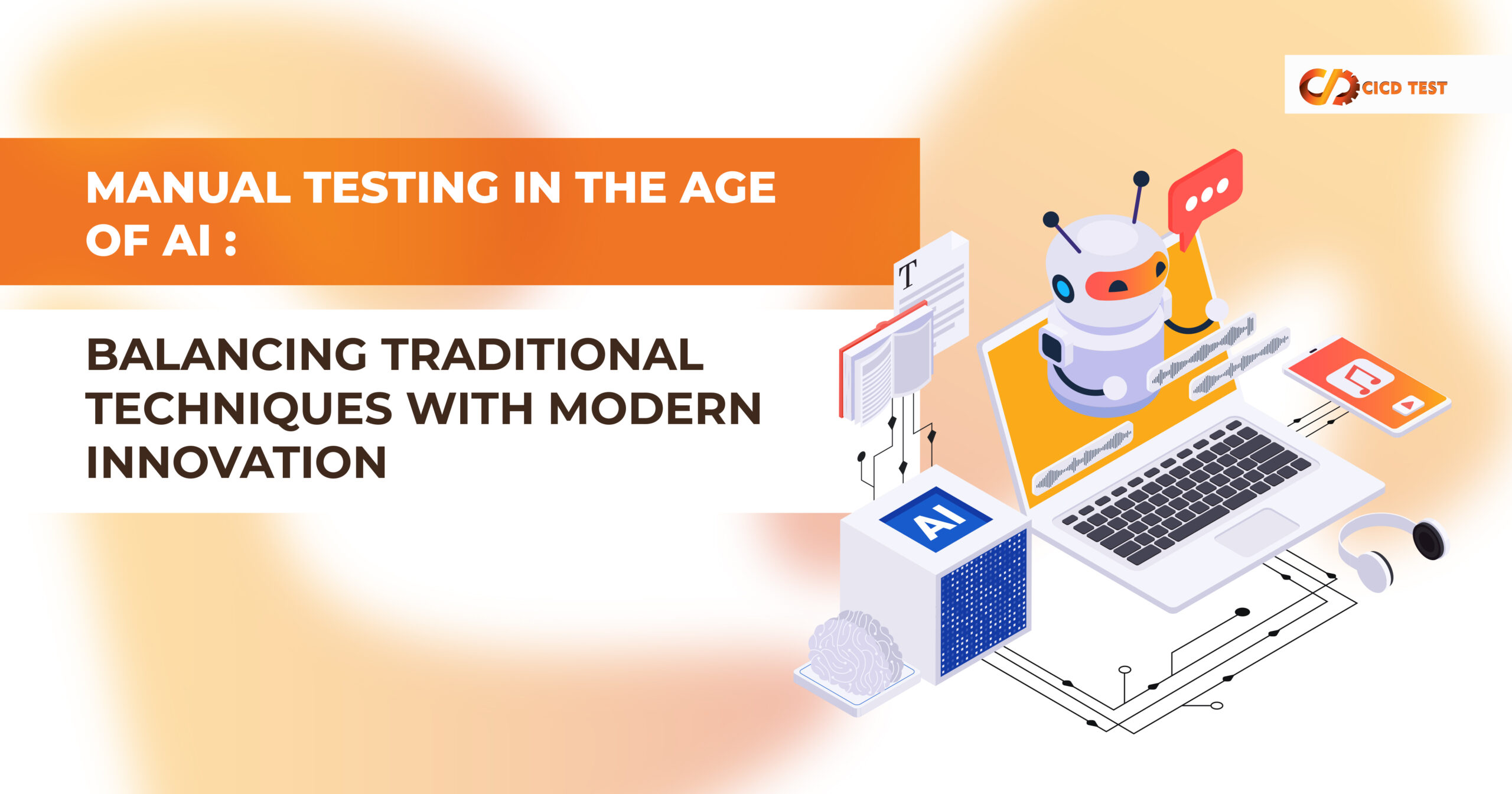
Manual Testing in the Age of AI: Balancing Traditional Techniques with Modern Innovation
In today’s digital age, software testing is an essential part of the software development life cycle (SDLC). It is a process of ensuring that a software application meets the expected quality standards before it is released to the market. Traditionally, software testing was done manually by human testers. However, with the advent of artificial intelligence (AI), the landscape of software testing has changed.
Manual Testing in the age of AI is the integration of traditional software testing techniques with modern technologies such as AI, machine learning (ML), and automation. The goal of this approach is to improve the accuracy, speed, and efficiency of software testing while reducing the time and cost associated with manual testing.
However, the question arises, can manual testing still coexist in the age of AI? In this article, we explore the benefits and challenges of combining traditional and modern software testing techniques.
The Benefits of Manual Testing in the Age of AI
1. Quality Assurance
Manual testing is still a crucial part of the software testing process. The human touch is essential to ensure that the software application meets the end-users expectations. Manual testing provides a comprehensive understanding of the software application, ensuring that it works as expected in real-world scenarios.
2. User Experience Testing
User experience testing is a crucial aspect of software testing, and it cannot be automated entirely. Human testers can identify issues that an AI algorithm might overlook, such as font size, color, and other visual elements that affect the user experience.
3. Cost-Effective
Manual testing is less expensive than automation testing in the short term. Automation testing requires a significant upfront investment, and it is often challenging to maintain and update. Manual testing can be performed using simple tools and requires no programming knowledge, making it a cost-effective solution.
4. Flexibility
Manual testing offers more flexibility in terms of test coverage. Human testers can think outside the box and identify edge cases that an AI algorithm might overlook. Manual testing can be customized to suit the specific needs of the software application, making it more flexible than automation testing.
The Challenges of Manual Testing in the Age of AI
1. Time-Consuming
Manual testing is time-consuming, and it requires a significant amount of effort. In the age of AI, where speed and efficiency are critical, manual testing can slow down the software development process.
2. Human Error
Manual testing is prone to human error. Testers might miss critical bugs or overlook certain issues, leading to software defects. This challenge can be overcome by implementing stringent quality control measures and best practices.
3. Limited Scalability
Manual testing is not scalable, and it is challenging to replicate the same test cases on different platforms and devices. Automation testing offers more scalability and can perform the same test cases on multiple platforms and devices.
4. Limited Test Coverage
Manual testing has limited test coverage, and it cannot test the software application comprehensively. Automation testing offers more comprehensive test coverage, ensuring that all aspects of the software application are tested.
How to Balance Manual Testing with AI
1. Identify the Right Test Cases
To balance manual testing with AI, it is essential to identify the right test cases that require human intervention. These test cases could be related to user experience testing, edge cases, or scenarios that require human judgment.
2. Define a Test Strategy
A test strategy should be defined that outlines the software testing approach. The test strategy should include the tools, techniques, and methodologies that will be used for software
Conclusion:
In conclusion, Manual Testing in the age of AI is not an either-or proposition. Both manual testing and AI-based automation testing have their unique benefits and challenges. Manual testing is still essential for ensuring quality and providing a comprehensive understanding of the software application. On the other hand, AI-based automation testing provides more scalability, speed, and efficiency.
To balance manual testing with AI, it is essential to identify the right test cases that require human intervention and define a test strategy that outlines the software testing approach. A hybrid approach that combines manual testing and AI-based automation testing can ensure comprehensive test coverage, speed, and efficiency while maintaining the human touch in software testing.
In the age of AI, manual testing still plays a critical role in ensuring software quality, and it can coexist with modern software testing techniques. The key is to find the right balance and leverage the strengths of both approaches.

